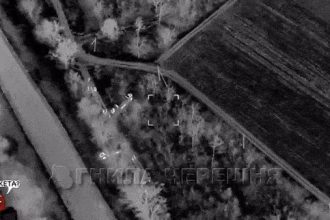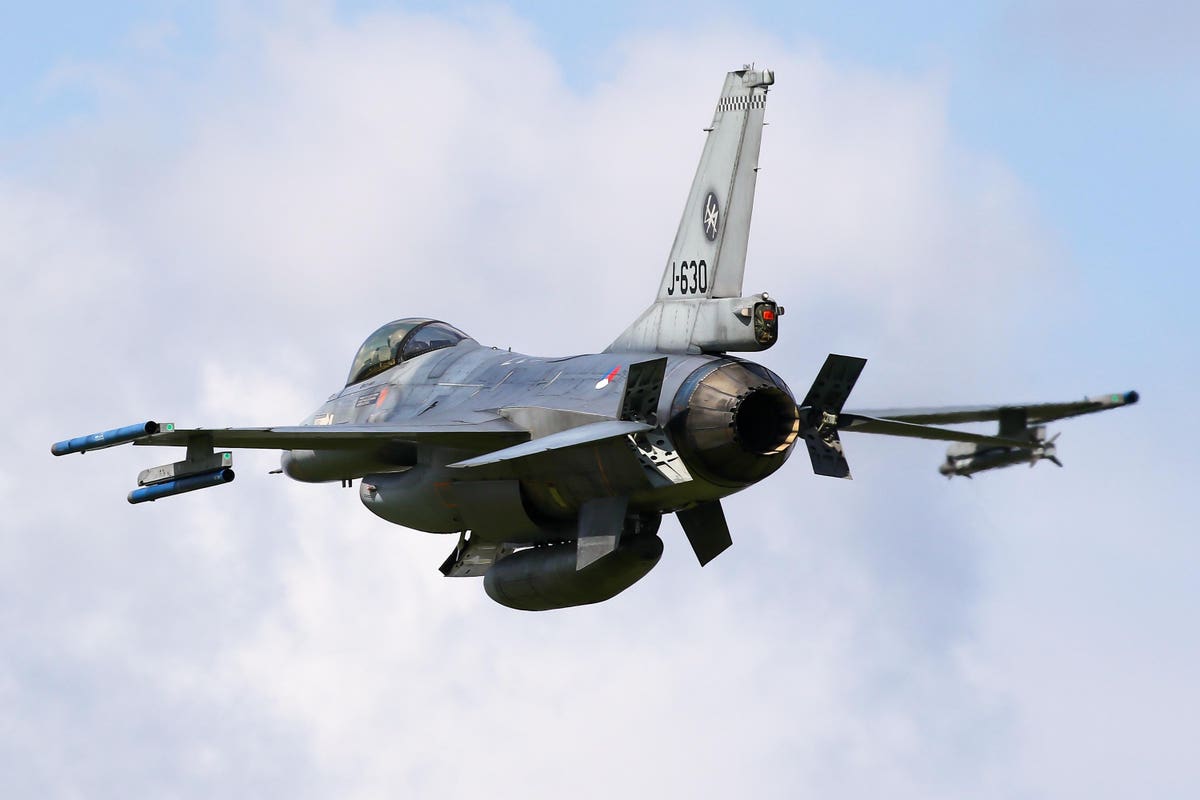Over the weekend, Ukrainian Defense Minister Oleksii Reznikov told CNN that F-16 training for Ukrainian pilots will begin in August. An unnamed senior European official says the country could actually have airplanes as soon as this fall.
Despite Reznikov’s assertion, and more vague weekend comments on flight training commencement by White House national security adviser Jake Sullivan, I’ve previously noted the possibility that Ukrainian pilots have been undergoing flight training in the U.S., the Netherlands or elsewhere for some time.
The chance that F-16s could be in Ukraine by late this fall, raised by a European official who spoke to the Washington Examiner this past weekend, suggests that training of both pilots and maintenance personnel may indeed have quietly been ongoing in Denmark or the Netherlands, and possibly in the United Kingdom or Poland.
“If they’ve done some of the preliminary training already for pilots and maintainers, if they started work on the aircraft themselves back a month or two ago, maybe they could [send F-16s] by the autumn. October, November? I can imagine that,” says Center for Strategic and International Studies (CSIS) senior adviser Mark Cancian.
Cancian adds that the anonymous official’s statement may reflect European pressure to move forward with an F-16 transfer, a process that the Biden administration has appeared lukewarm about. In comments to the Aspen Security Forum late last week, Jake Sullivan, explained that the August training kickoff was not arbitrary.
“It’s because every day people are getting up at the Pentagon … reporting all the way up to the secretary of defense and to me on the progress of putting in place what is necessary to do a very complex task.”
The imprecise August date could well reflect that Cancian observes. “It takes a little while to select the right people and get them onboard. It takes a little while on the administrative side, to get the aircraft readied.”
Nevertheless, there has been consistent pressure from Ukraine notably reflected in public comments by Ukrainian president Volodymyr Zelensky regarding his country’s desire for F-16s, even during a dust-up at the NATO summit in Lithuania which Joe Biden attended earlier this month.
“Zelensky has repeatedly put F-16s at the top of his list. He’s pointing to that as one reason why the [Ukrainian] counter-offensive isn’t doing well,” Cancian reminds.
“That said, there have been announcements over the last couple of months about Denmark and other Nordic countries providing aircraft and training – the UK has stepped up – so the [timing] of this training announcement is consistent with what we’ve been hearing for the last number of weeks.”
The Ukrainian F-16 timeline looks close regardless of how differing estimates are interpreted. Reznikov told CNN that he thought his country’s pilots could be operating F-16s in the skies of Ukraine by spring of next year. That would indicate at least the start of aircraft transfers (likely by rail from Poland Cancian says) by February or earlier.
There are other elements of the war which could influence the timeline. Last week, Russia backed out of the Black Sea grain shipment arrangement that had allowed Ukrainian exports of the globally in-demand cash crop. Since quitting the deal, Russia has been striking Ukrainian food-exporting Black Sea ports.
The administration has consistently hewed to the line that F-16s will not markedly change the immediate tactical or strategic situation in Ukraine. At the Aspen Forum Sullivan argued that the primary value of the jets will bear out over “the long-term defense and deterrent capability of Ukraine,” downplaying their potential to influence the immediate struggle thanks to the highly effective anti-air ground assets that both sides have deployed.
But the prospect of F-16s making their way to Ukraine earlier than later was mentioned by the official interviewed by the Washington Examiner who speculated that Ukrainian pilots using them could loosen Russia’s grain blockade.
“When Ukraine will have F-16s, then they are able to control their part of the Black Sea, and then they will force by themselves a corridor,” the senior European official told the Examiner.
Their ability to affect the tactical picture in the Black Sea would depend on more than mere presence. Ukrainian defense officials have pressed for the airplanes to be equipped with advanced weapons including the long-range (approximately 110 miles) AIM-120 air to air missile. One Ukrainian Air Force general reckoned it would allow them to force Russian aircraft to stand off far enough from the Ukrainian border to blunt the range of targets they could hit with air-launched missiles.
The F-16 can also carry the AGM-84 Harpoon Block II anti-ship missile whose range (estimated at 60 to 80-plus miles), accuracy and striking power could deter Russian vessels from approaching Black Sea ports and thus interception of grain shipments.
Ukraine’s defense establishment has expressed a need for three to four F-16 squadrons to meet its defensive/offensive needs. That would tally with estimates previously assessed in Forbes that Denmark, Norway, and the Netherlands could offer a combined 50 aircraft. Cancian cautions that there may be questions about technology transfer that could limit the types of systems donated aircraft could carry but he acknowledges that these can be overcome in time.
Whether they arrive this fall or early next winter, Russia will not be pleased with the reality of Ukrainian-operated F-16s entering the War. That displeasure notwithstanding, there’s little they can effectively do about it CSIS senior adviser says.
“There really isn’t anything they aren’t already doing that they could add. They’ll certainly work hard to try to destroy some of the F-16s. They’ve been trying to do that with Leopards [tanks] and Patriot missiles. They haven’t been really successful though I think they damaged one Patriot battery. In terms of escalation or other countermeasures, they’re already doing everything they can.”
With the momentum for shipping F-16s to Ukraine seemingly at full speed and questions about the amount of flight training Ukrainian pilots may have already received, the question of whether the U.S. or NATO countries have already surreptitiously sent operations and sustainment personnel inside Ukraine to prepare the ground also arises.
“That’s a great question,” Cancian acknowledges. “I’ve always thought the Ukrainians are going to need [weapons systems] contractors on the ground. So far that does not seem to have been the case. With ground systems what they’ve been doing is that if a system is too badly damaged, they put it on a rail car and ship it to Poland [for repair].”
“Maybe they do the same with F-16s though it would certainly be easier if they had some number of contractors on the ground. Whether it would be viable to send airplanes back to Poland via rail is hard to say.”
Alternatively, spares and new systems could be flown back and forth between Ukraine and bordering F-16 support facilities in transport or even light aircraft, potentially shuttling private maintenance personnel as well.
Ukraine’s Oleksii Reznikov has said that that the country still needs to add some infrastructure for the fighter jets, a process likely underway now. He added that the maintenance of the jets is a “serious task” which includes intensive training sessions for technicians.
While such training will reportedly take place in Denmark, the Netherlands, Norway, or the UK, it may very well be ongoing in Ukraine to the extent that western instructors can pass knowledge along before the Ukrainians get “hands on” with the jets.
The entire enterprise appears about to jump a couple levels in intensity and if some in NATO are to be believed, F-16s may grace Ukrainian skies before Christmas.
Read the full article here





